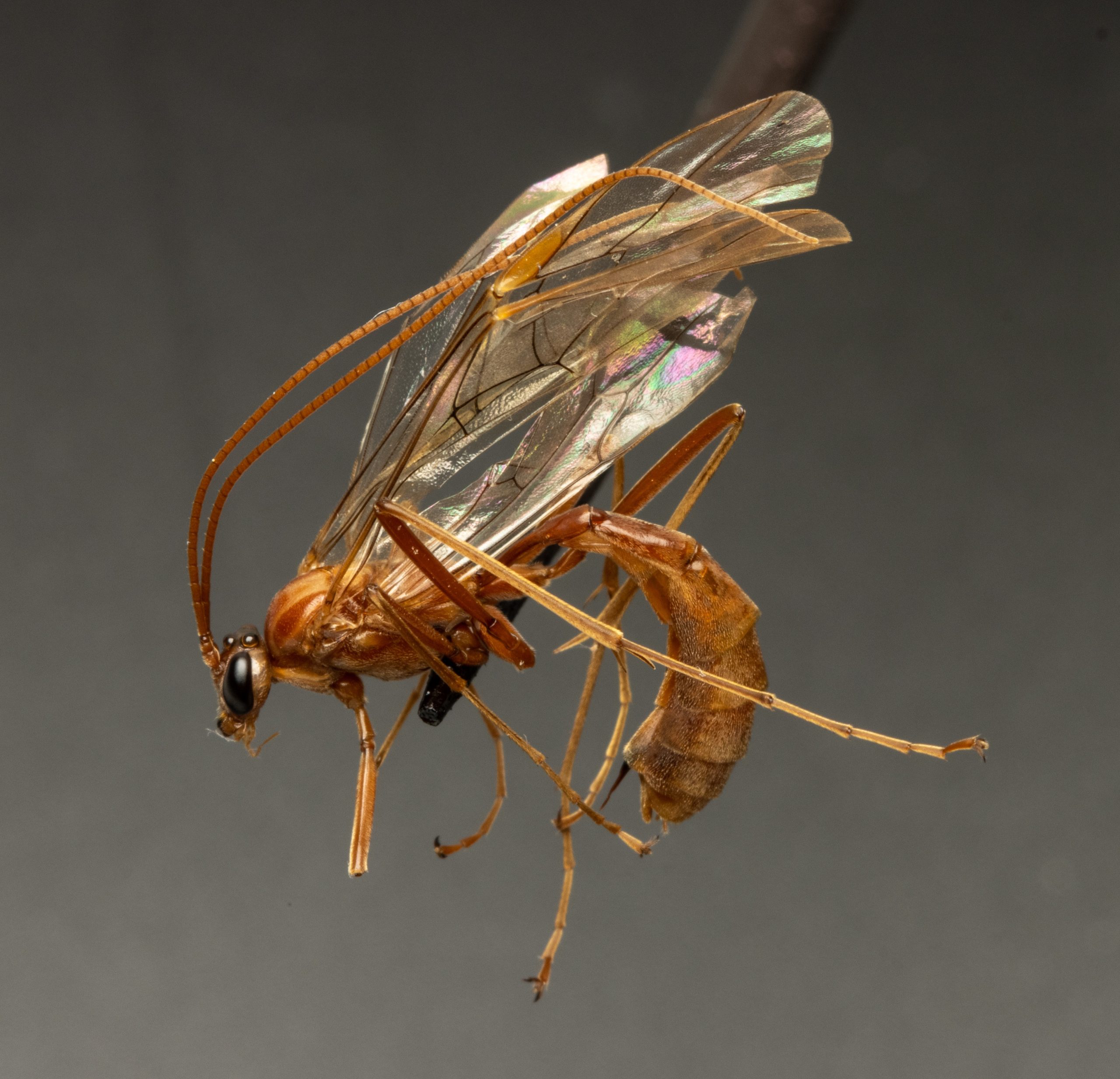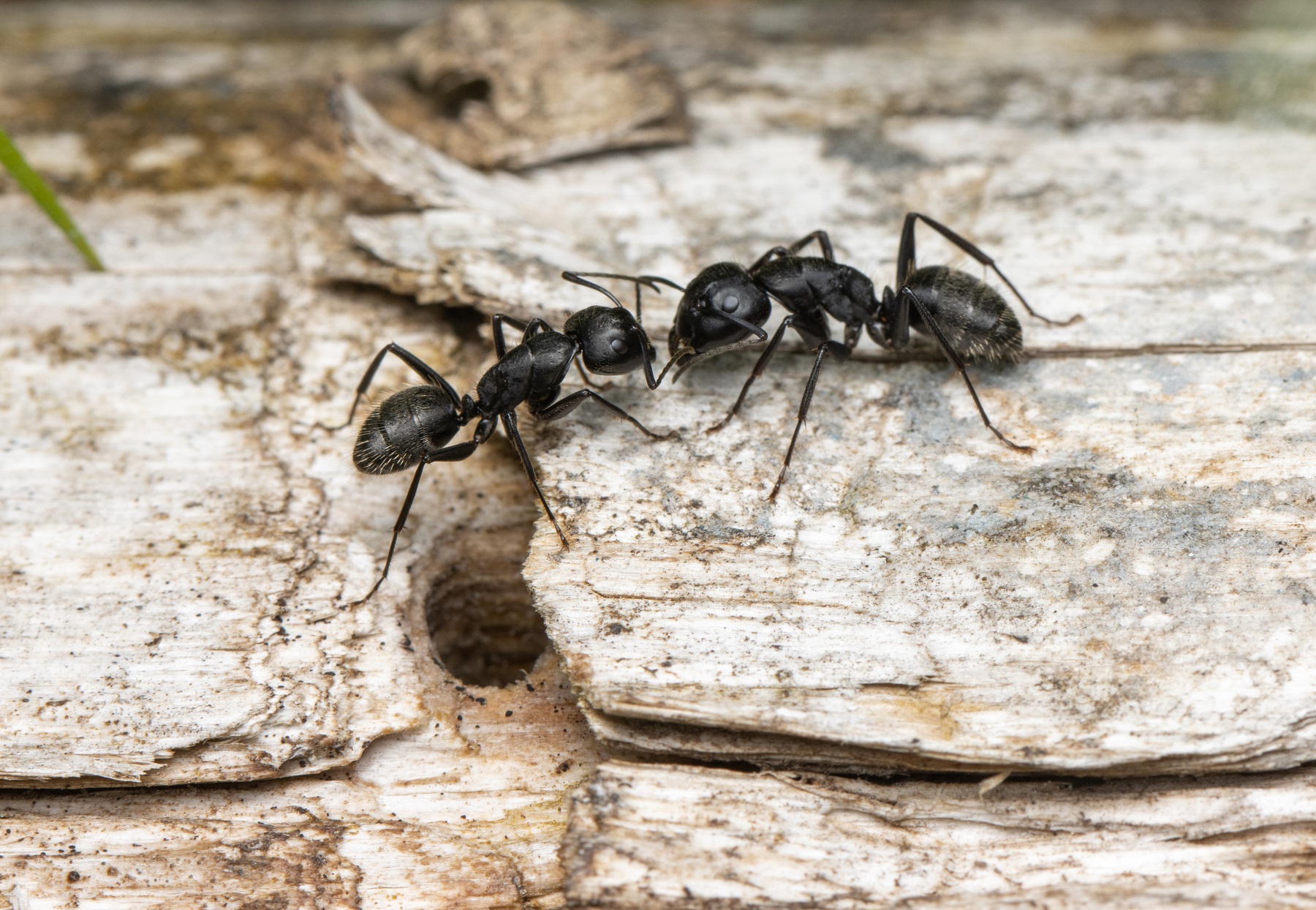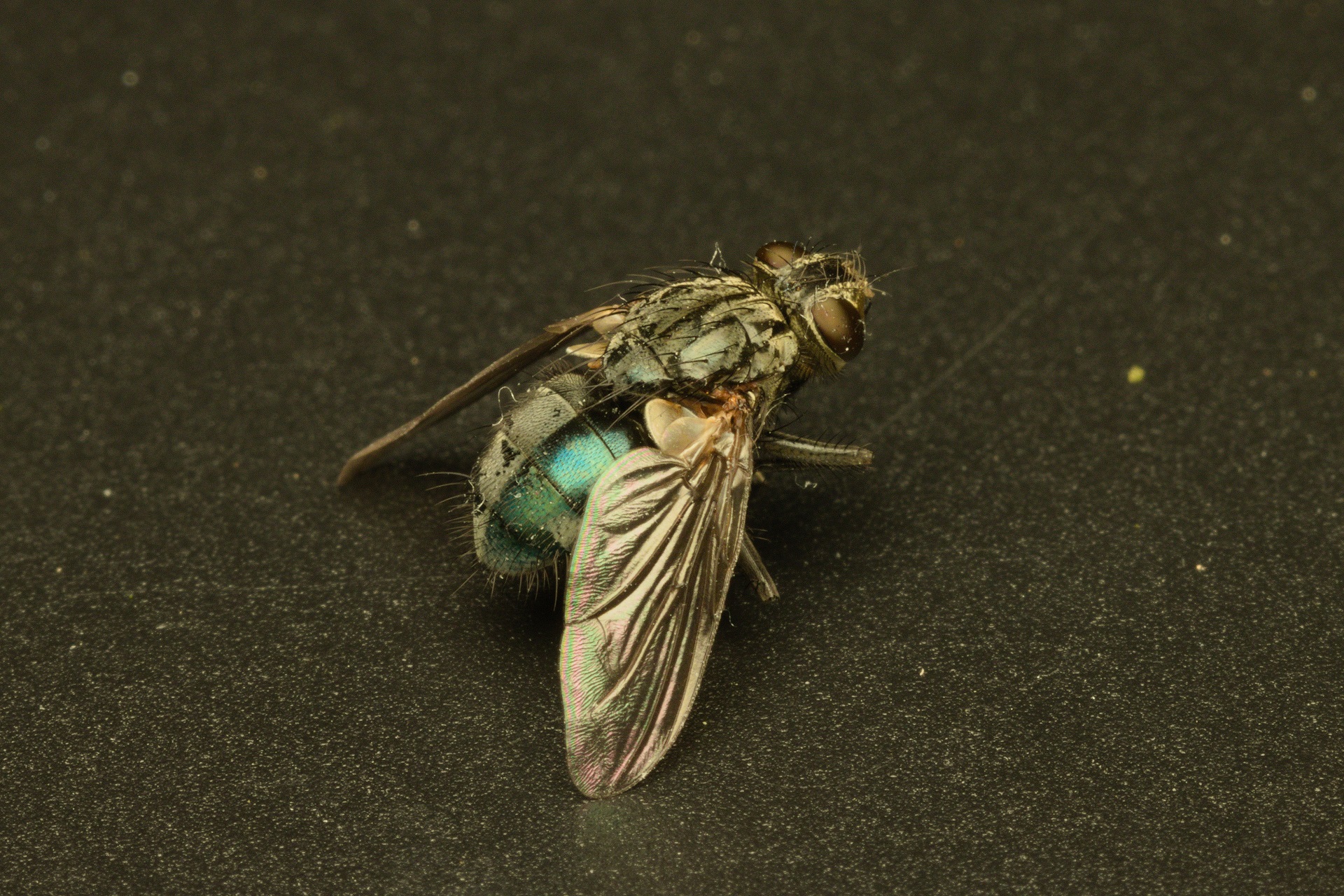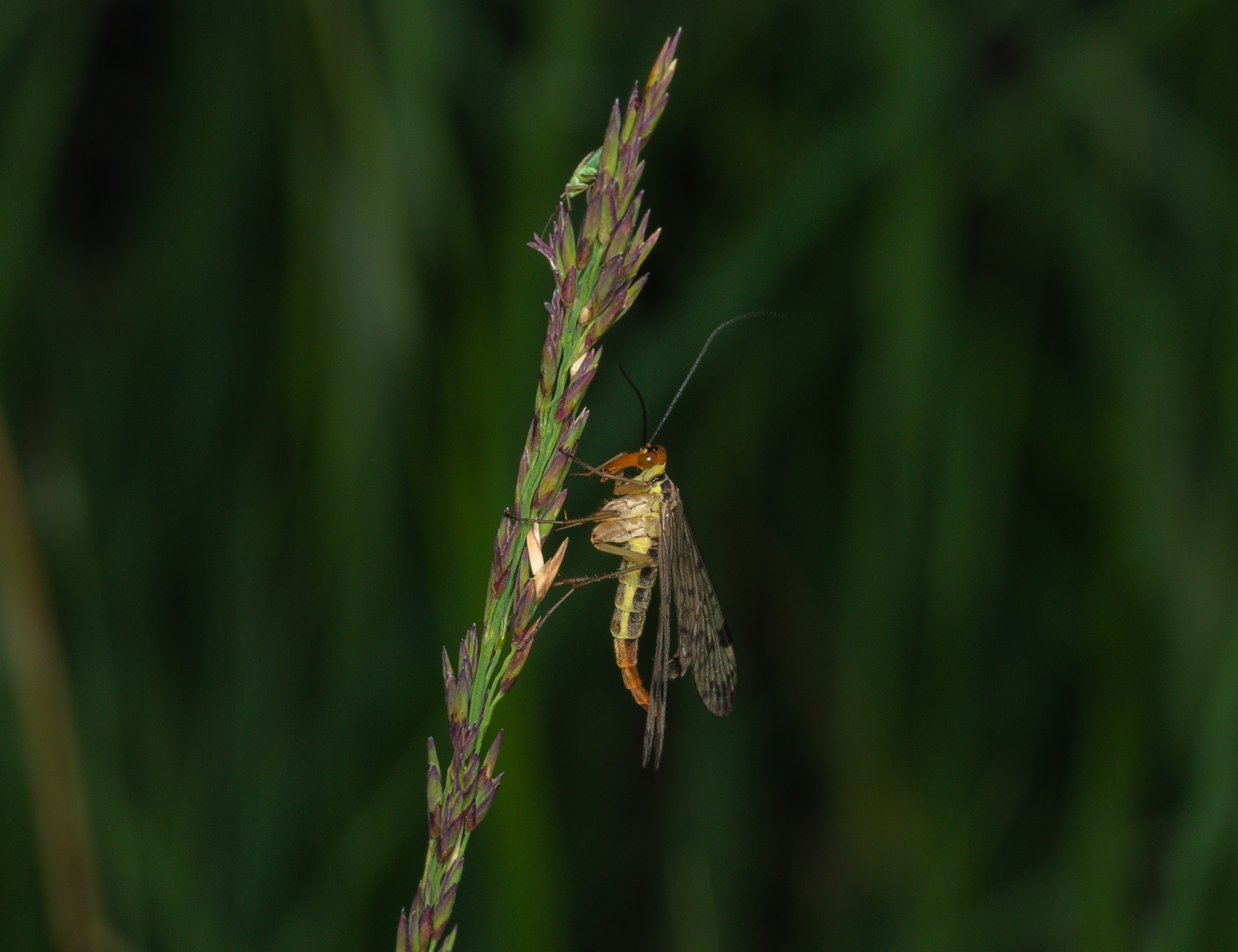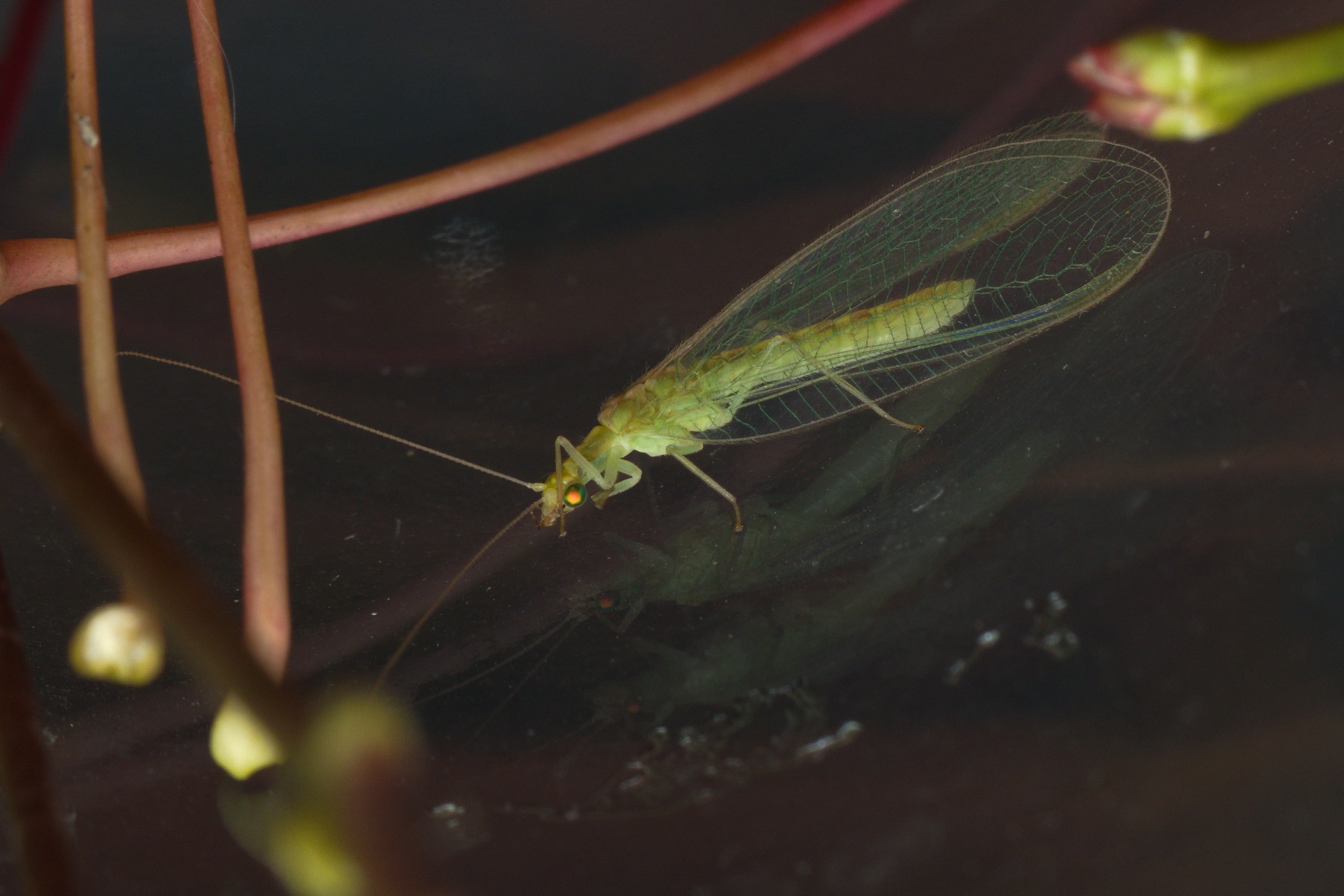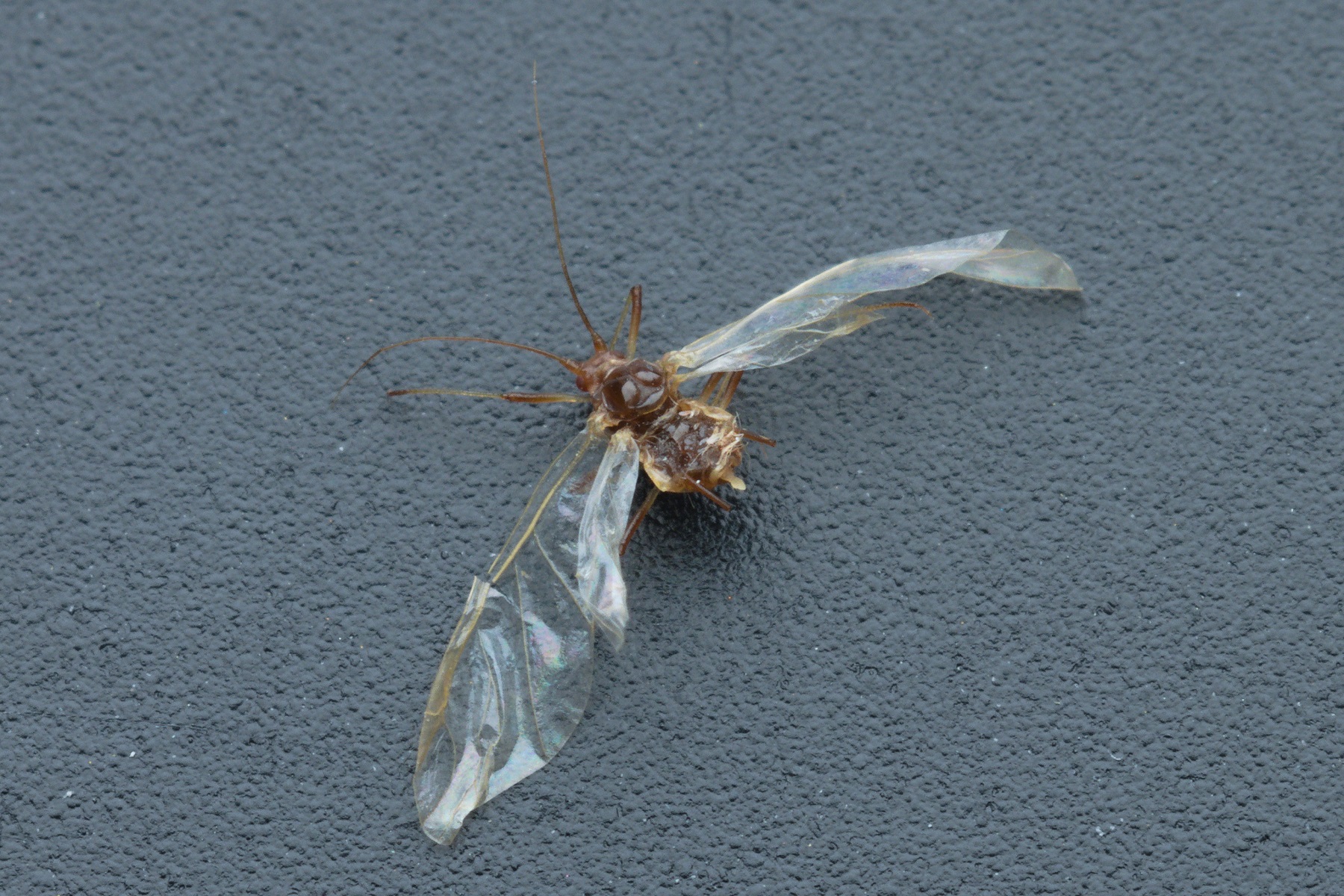Siphonaptera
Description
Fleas are secondarily wingless insects, up to 3 mm long. Their body, consisting of the head (cephalon), thorax, and abdomen, is strongly laterally compressed and covered with heavily sclerotised plates. On the head, fleas have simple dot-like eyes (ocelli), short antennae and piercing-sucking mouthparts. The front jaws (mandibles) are reduced, but the middle (maxillae I) and hind (maxillae II) jaws are well developed. The latter are fused to form a groove-shaped lower lip (labium), along which the stylets slide. The upper mouthpart is closed by a part of the upper lip (epipharynx) forming a tube-like food canal. The stylets are derived from parts of the middle jaws (maxillary lacinae). The thorax is also equipped with the sensory palps on the middle and hind jaws (maxillary and labial palpi). The thorax consists of three body segments, the first of which is very small. Each thoracic segment bears a pair of legs, the last pair is modified for jumping. At the end of the legs is a pair of hooked and widely spread claws: allowing the flea to grip to its host. Along on the body, on the dorsal side of the segment, are bristles arranged in comb-like rows.
Biology
Fleas are ectoparasites that feed on the blood of mammals and birds. Their laterally compressed body and sclerites (comb-like hard plates) allow them to move easily through hair and fur. Whilst the sclerotised chitin provides protection against the host’s scratching. As a rule, fleas are normally specialised to one host species, but at least in our region, they are not highly specialised and can opportunistically change hosts. They pierce the skin with their epipharynx (central stylet) and, whilst their antennae rest on the skin, inject an anticoagulant into the wound. If the host does not disturb it, a flea consumes up to 5 µl of blood per meal and typically feeds once a day. Flea bites irritate the skin and can spread diseases.
Fleas are dioecious (of separate sexes), with the males being smaller and more flender than the females. During mating, the male carries the female on his back, holding her with his antennae and mating apparatus. Fleas are holometabolous insects, with four main life stages. After feeding, the fertilised female lays her eggs, usually in the nest or bedding of the host. She lays 6-10 eggs per clutch, laying eggs daily for about three months. The eggs hatch into maggot-like larvae. Larvae have no limbs, and feed on faeces or edible remains in the host’s nest with their chewing mouthparts. After two moults, the larva spins a cocoon and after three further moults, pupates within the cocoon. The transformation into an adult flea takes place in 8-14 days. Young fleas must moult before they are fully sexually mature. Adults live up to three months.
Fleas are considered to be some of the best jumpers in the animal kingdom, thanks to a pad on the base of their third pair of legs made of the protein resilin. This pad tenses up like a spring just before a jump and, together with muscle contraction, contributes to the leap.
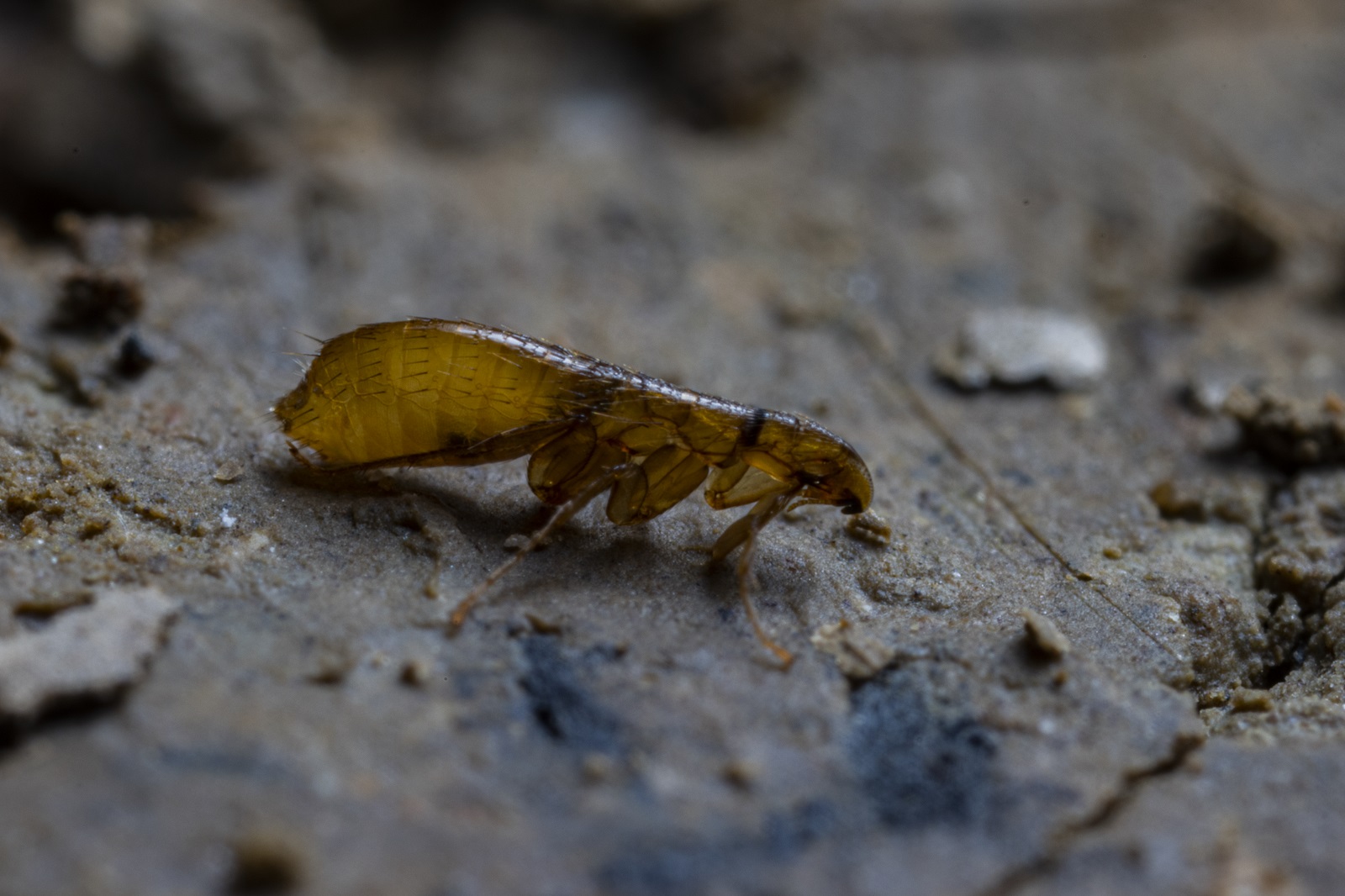
Sorodni členonožci

Authors
- Urban Bogataj,
- Gregor Bračko,
- Teo Delič,
- Cene Fišer,
- Žiga Fišer,
- Rok Kostanjšek,
- Rudi Verovnik,
- Miloš Vittori,
- Valerija Zakšek.
Students Vito Ham, Vesna Jurjevič, Gaj Kušar, and Adrijan Samuel Stell Pičman also participated in the project.
